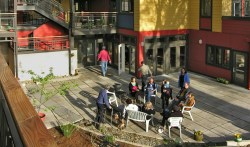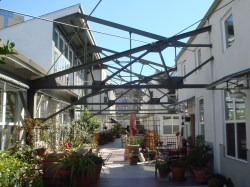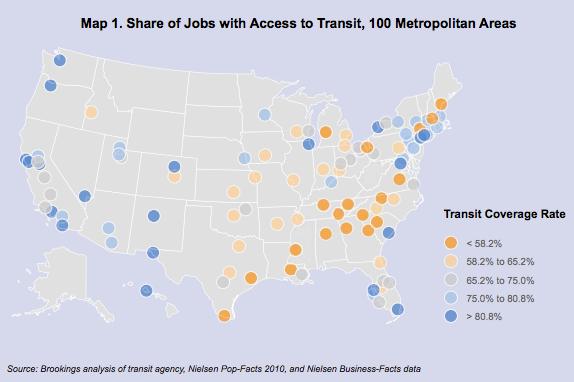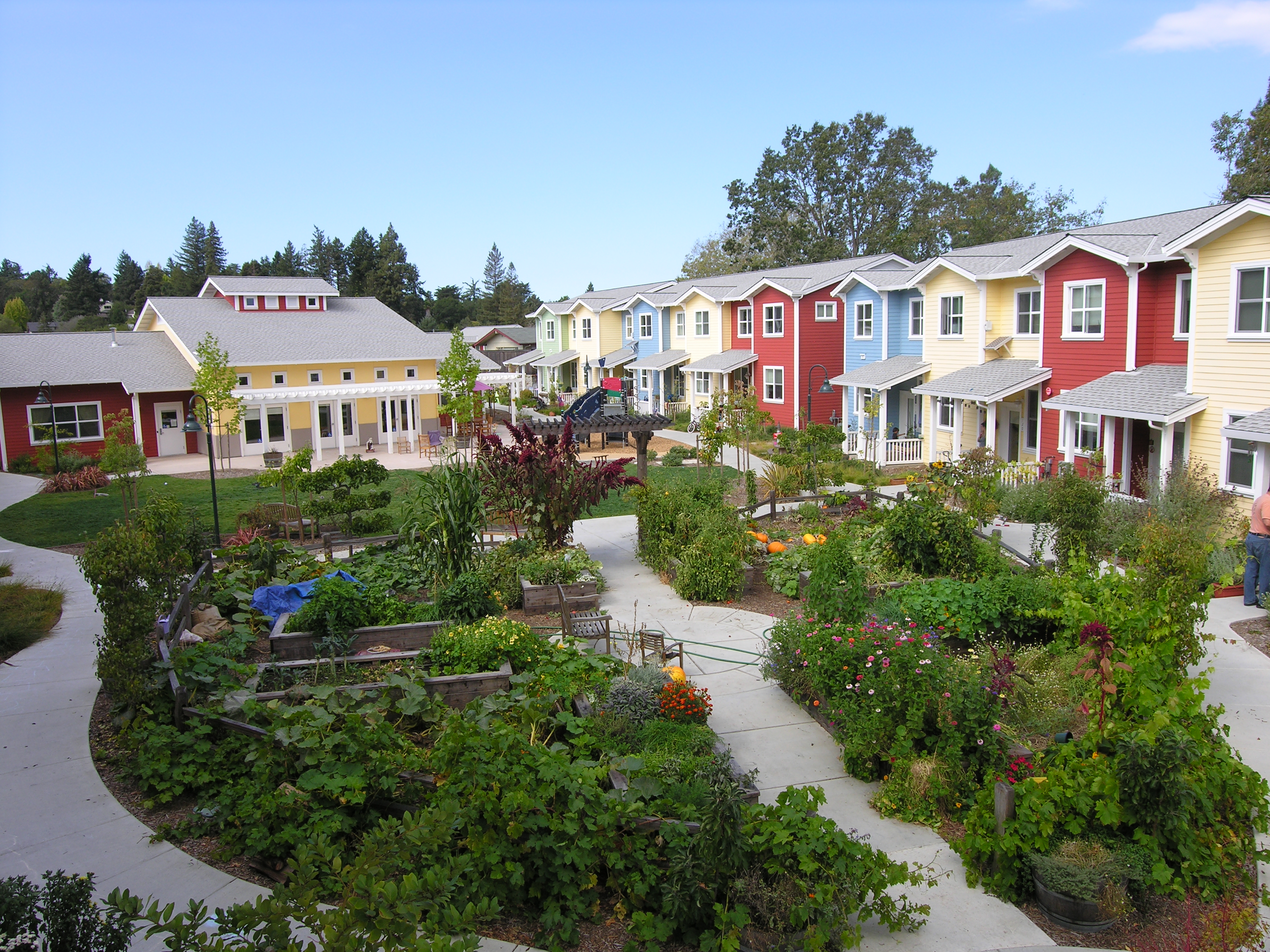
Petaluma Avenue Homes, an affordable cohousing community in Sebastopol, Calif. (Photo by Schemata Workshop.)
Back in the good old days, I’m told, people lived in neighborhoods where they looked out for each other. They had potlucks, kept an eye on each other’s kids, loaned out lawnmowers and cups of sugar. Each home was its family’s castle, but the instinct to participate in a caring community transcended the temptation to isolate in private houses.
Apparently we’ve strayed so far from that norm over the last half-century or so that it now takes a conscious effort to recreate it. That’s one way to view cohousing, a collaborative housing model imported to the United States from Denmark in the 1970s, in which “residents actively participate in the design and operation of their own neighborhoods.” In the approximately 125 cohousing communities in the U.S., residents share chores and responsibilities, come together for meals and other activities in a common house, and make decisions based on consensus. It’s a conscious way of living designed to encourage social interaction and investment in the greater good.
Sounds nice, right? A little crunch-tastic, maybe, but nice. And the opportunities for making this type of housing eco-friendly are many. But there’s one problem: What sounds at first like a good way to save money — sharing play space, a group kitchen, etc. — is every bit as expensive as traditional housing, meaning that it’s out of reach for many people who could benefit from it.
Current and aspiring cohousers wax idealistic about the day-to-day benefits of living in such a community, from the practical, like sharing cooking and childcare duties, to the more intangible, like being part of a subculture where generosity is expected and encouraged. “I personally believe we were made for this type of community,” says Jerome Garciano, an attorney on the advisory board of Partnerships for Affordable Cohousing, a nonprofit working to make cohousing more accessible.

Residents hang out in the courtyard at Daybreak Cohousing in Portland. (Photo by Schemata Workshop.)
But despite the progressive inclinations of its enthusiasts, cohousing traditionally attracts a mostly white, educated, upper-income crowd — those with the means to buy a new, market-rate house (generally in the $200,000 to $500,000 range, depending on local real estate prices) and the time and energy to invest in a laborious planning process (Susan Stafford, a resident of Seattle’s Jackson Place Cohousing community, describes it as “fairly horrible”), plus monthly meetings and commitments to shared responsibilities once the community is up and running.
Garciano and his wife, he says, have a “high earning capacity,” but found cohousing still out of their economic reach. (In Massachusetts, where they live, some cohousing communities have units that have sold for over half a million dollars.) Stafford, who describes herself as “educated but very poor,” was attracted to the Jackson Place community because of its promise of affordability – but ended up having to get help from family after the housing boom drove the units’ final prices much higher than expected. (A two-bedroom unit at Jackson Place is currently selling for $310,000.) Even Rebecca Lane, executive director of the Cohousing Association of the U.S. (Coho/US), has never lived in cohousing because of the cost, she says.
Clearly, the model needs to adapt — especially because the very people it shuts out could be the ones who benefit most from its built-in support network: low-income families who could share childcare and meals, seniors who need companionship and rides to doctor’s appointments, or developmentally disabled adults able to live semi-independently. “A lot of those populations need support that can come from community, not social services,” says Grace Kim, a principal at Schemata Workshop, a Seattle architecture firm planning a cohousing community in the city’s Capitol Hill neighborhood. “We’re trying to figure out how those two models can merge so that cohousing can evolve into more than just homeownership for wealthy white people.”

In Oakland, historic Swan’s Market was converted into a complex that includes cohousing, low-income housing, and a children’s museum. (Photo by Schemata Workshop.)
Cohousers often point to the planning stage — in which members of a forming community work together to design every aspect of their soon-to-be-neighborhood — as a sticking point. With government-subsidized affordable housing, it’s hard for residents to participate in planning, since it’s often unknown until the last minute whether they will qualify to live there. (And working multiple jobs or being a single parent doesn’t leave much time to haggle over things like countertop material in the common-house kitchen.)
In an article [PDF] for the Journal of Affordable Housing, Garciano describes a few examples of affordable cohousing communities already in existence, like Petaluma Avenue Homes in Sebastopol, Calif., developed by a nonprofit for households earning 30 to 60 percent of area median income. As of May 2010, rents there ranged from $452/month for the cheapest one-bedroom to $1,254/month at the upper end for a three-bedroom. Wild Sage Cohousing in Boulder, Colo., is a mixed-income community of renters and homeowners whose 13 affordable units start at $70,000, while its 21 market-rate units cost up to $434,000.
While including rental units in a cohousing community opens it up to more income levels, there’s a perception that homeowners make more stable, committed participants. Capitol Hill Urban Cohousing in Seattle is bucking that convention by making its units market-rate rentals (starting at $2,000/month, with 10-year lease terms, which means they’ll soon be affordable compared to other rentals in the neighborhood, one of the city’s most sought-after). And since the housing crash, cohousing communities across the country have started to tweak the traditional formula — more of them are opening up to renters or retrofitting old buildings instead of building from the ground up.
These innovative, inclusive new approaches to cohousing are a great example of new ways of looking at creating community. “We’re in the early phases of refocusing the American dream,” says Rebecca Lane, Coho/US executive director.
And beyond just rearranging the way we live, cohousing has great potential to reduce the amount we consume. It is ideally suited to ventures like group-purchased renewable energy, car shares, and hyper-local food production. Many rural and suburban cohousing neighborhoods have a farm or garden onsite; Capitol Hill Urban Cohousing will include a rooftop farm.
And as Garciano points out, “even if whatever neighborhood you build is not cohousing, the concepts and principles of cohousing are making their way into mainstream urban planning.” The growth of the sharing economy, a focus on walkable neighborhoods, a preference for smaller, more efficient homes — all these developments reflect central values of cohousing.
In other words, we’re starting to realize that our long-term future won’t be built around highways, automobiles, and detached houses with fertilized lawns. As more people seek out a different kind of community, cohousing, or projects like it, will grow in popularity.
“There’s a lot of need for affordable housing; there’s a lot of need for people to not feel isolated,” says Kim. “And there’s a huge interest in sustainability. So I think all of those things can kind of come together in a swirling vortex and create cohousing.”



